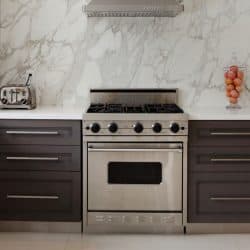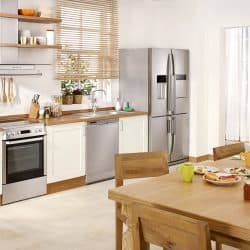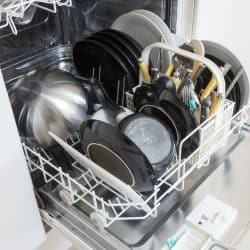When setting out to format a new kitchen or renovate your old one, fitting in the necessary appliances is an essential first step. Your dishwasher and your stove are often the centerpieces you will build the rest of your plans around. But whether due to space constraints or just curiosity, you might find the question arising. Is it possible to put your dishwasher next to the stove in your kitchen? Well, we have researched this question for you in the article down below.
Where to best install a dishwasher and oven in relation to one another depends on the type of oven. You can install a dishwasher next to a freestanding oven with as little as 2 inches of clearance.
However, if you plan to use a built-in or built-under oven, you'll need a space of about 2 feet. This clearance will allow for heat dissipation from your oven without affecting your dishwasher.
We'll explain the difference between freestanding and other oven types, along with why these numbers are essential to incorporate, down below. So continue reading to learn about the importance of spacing and more.
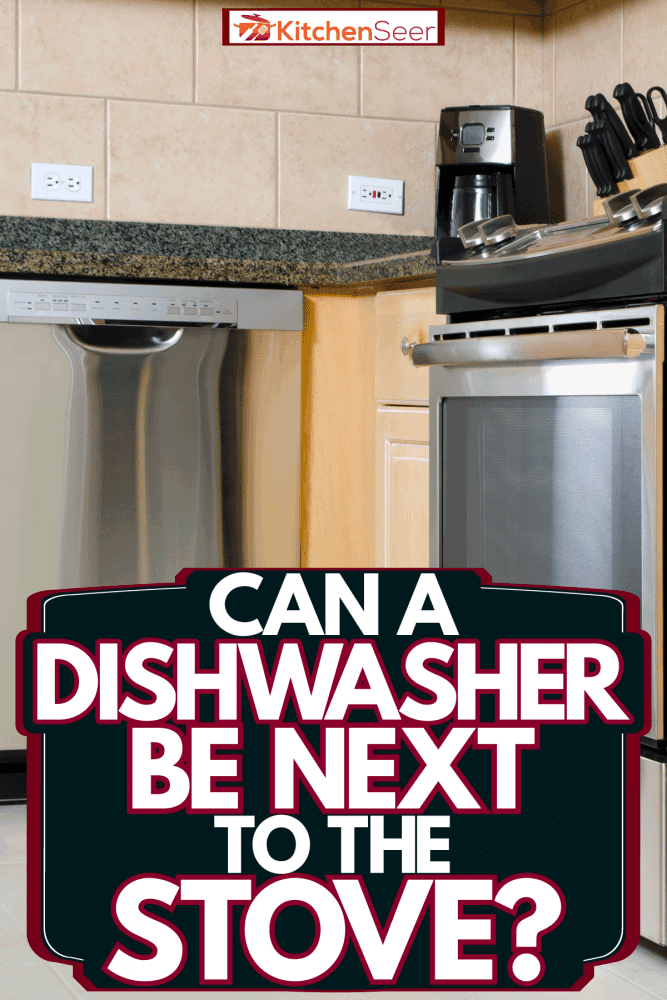
How much space do you need between stove and dishwasher?
Dishwashers and ovens can share space provided that both have enough space to do their tasks. The issue when an oven and dishwasher are too close is the transmission of unwanted heat and humidity. However, if given the proper amount of space and adequately insulated, the appliances should both work fine.
The numbers above 2 inches and 2 feet for built-in ovens are required to keep the heat and humidity from interfering.
The reason that freestanding ovens can stand so much closer to your dishwasher is due to the increased amount of insulation found in them. Freestanding ovens generally have exposed sides which is why they require this amount of insulation.
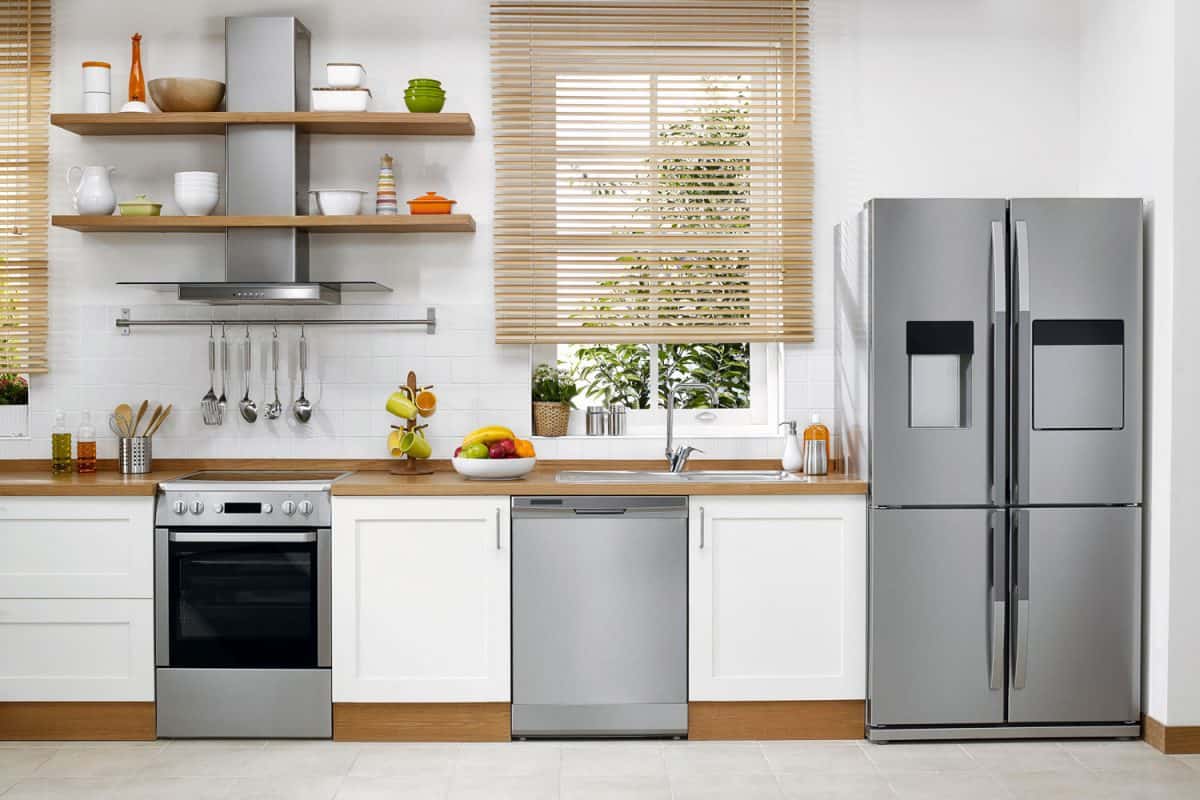
As for the humidity from your dishwasher, moisture is vented out of the front of most models. The back and sides of a dishwasher are sealed and should pose no problem for your nearby oven.
Ovens and refrigerators
Refrigerators are another appliance you might want to put next to your oven. You can do it, but it can also pose problems. Refrigerators use ambient air to cool the air inside the freezer and the refrigerator both. The warmer this ambient air, the more your fridge will have to work to stay cool and do its job. Similar situations will arise as with your dishwasher if your oven and fridge are too close to one another.
Installing a gable
Something that will help with the heat and humidity issue is installing a gable between them. Both appliances will span a large gap when installing a dishwasher and an oven next to each other.
You will need to reinforce this gap in your counter, and a gable can help with that. It is functionally the same as the sides on your cupboards. It provides strength to your counter while also acting as a spacer between your oven and dishwasher.
The gable won't take up much space either, so if you're already working in a small kitchen area, you still should be able to use one. Just make sure to incorporate the necessary space between your appliances, and you'll be good.
A small reminder
When installing a dishwasher and oven together, it's essential to consider the factors. The make and model of both appliances, as well as the type of the oven and dishwasher, both make a difference. If you have a kitchen designer or professional you can consult, don't hesitate to.
Also, consider if these appliances need to be close together. While you can do it safely, the hassles might not be worth it for some who have the space.
Read now on KitchenSeer.com: Are glass ovens safe? [Here's how to tell].
Can you put a dishwasher against a wall?
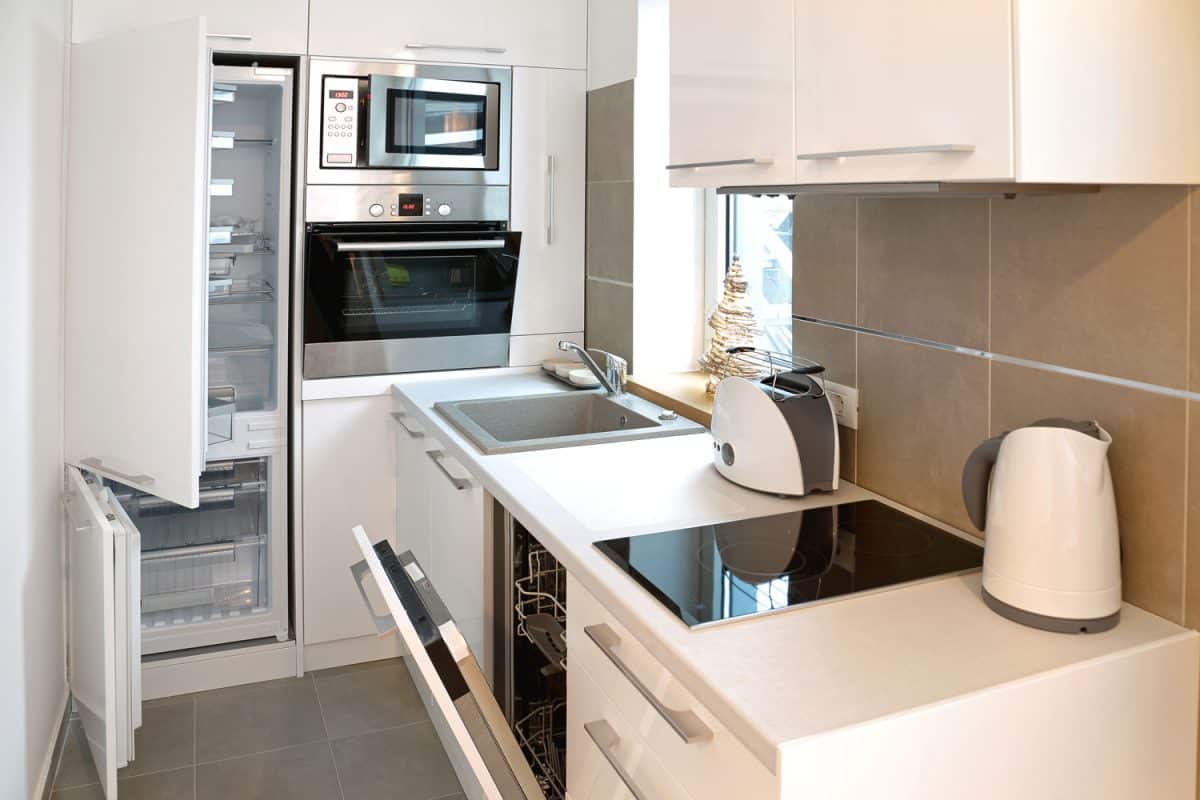
You shouldn't install your dishwasher against a wall; instead, give it around a 24-inch gap between them. Doing so may make it look like your dishwasher is sticking out past your counters, but that's as it should be.
Depending on the make of your dishwasher, it should stick out 1.5 inches from your counter. Some stick out as much as 2-3 inches. This gap is another necessary one to allow for the escape of steam and humidity from your appliance.
Because of all these necessary spaces between your dishwasher, walls, and appliances, it's essential to consider just where to place your machine. Ideally, the dishwasher door will stick out 2.5 inches from the cabinet frame and 1.5 inches from the counter.
Because of this, experts don't recommend placing your dishwasher next to the entrance to your kitchen. Placing it next to a high traffic area will only increase the risk of injury and accident.
A top controller dishwasher is an example of an appliance that will need a 2-3 inch extension. As the buttons to control the machine are on the top, you'll need to allow for more space. If you plan to have a dishwasher of this kind, consider formatting your cabinetry around it to level your machine.
Always make sure your dishwasher is securely mounted on the sides or under the countertop. Doing so will make sure the dishwasher cannot move around and potentially harm someone. It's also essential your dishwasher is aligned correctly.
Issues with alignment
At times your dishwasher door can fail to align correctly. An unaligned dishwasher can make it look like it's stuck out even more.
To properly align your dishwasher, follow the following steps. Please open the door, angling it from the tub to reach the hinge, preferably 15 degrees. Upon doing so, try lifting the door and setting it back on its hinges. If you hear a loud click sound, you'll know the door is put back correctly.
Can you put a wall oven above a dishwasher?
A wall oven is an example of the type of oven that will require the 2-foot spacing between it and the dishwasher. The main reasons not to put a wall oven above a dishwasher are the issues with heat and humidity transfer, as discussed above. You shouldn't install a dishwasher next to a wall oven installed under the counter either.
Read now on KitchenSeer.com: Do freestanding dishwashers need to be plumbed in?
Where do you put a dishwasher in a small kitchen?
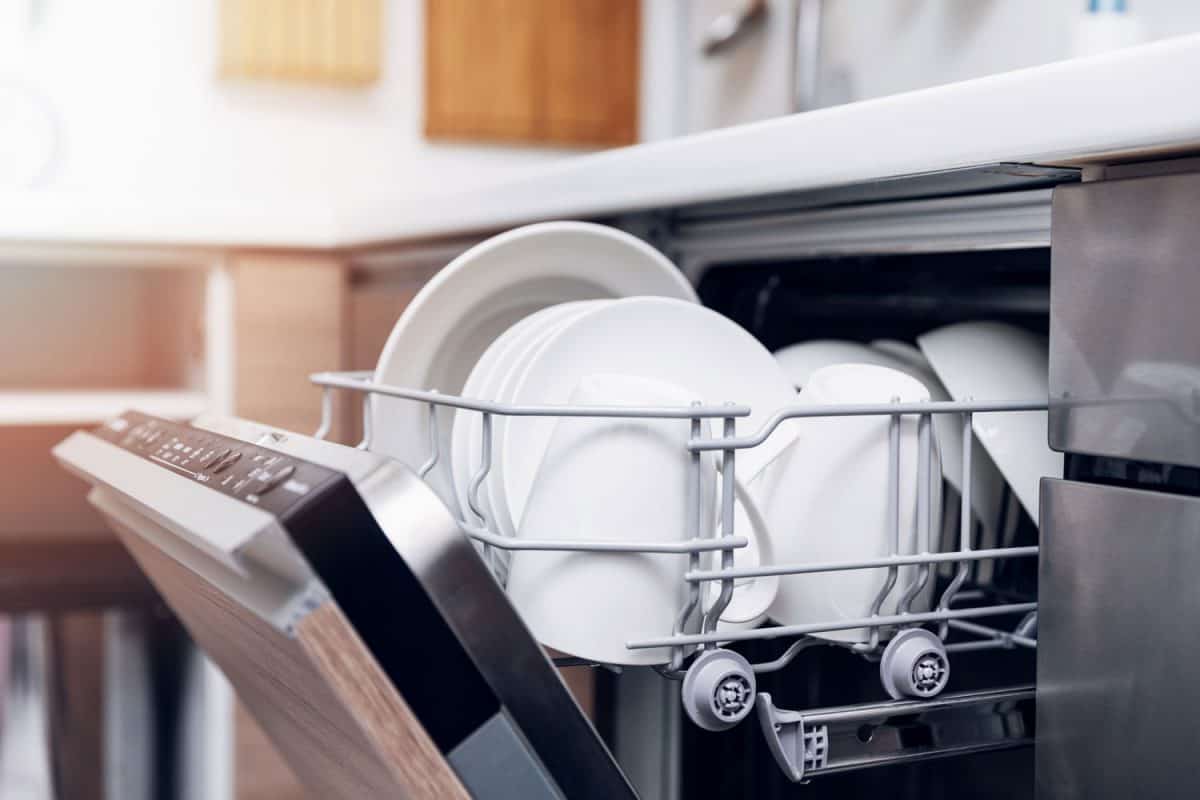
It's easy enough to say where your dishwasher can go when you have plentiful space. If you have a spacious kitchen and plenty of room to put your dishwasher, oven, and refrigerator well away from one another, there's little reason to put the appliances together.
But what about people with kitchens that are smaller than average? Where is the best place to put a dishwasher in a smaller kitchen, particularly the oven and other major appliances?
Things you can do for small kitchens
There are a few things you can do to make the problem of fitting a new dishwasher into a small kitchen easier.
Purchase a slimline dishwasher
These are appliances made to fit the decor and space of smaller kitchens without sacrificing ability. Doing so will give you some more spacing options than if you went with an average-sized dishwasher.
Place the dishwasher under your sink
Doing so means you can integrate your single bowl sink right into your dishwasher. You could also utilize a double under-sink unit beneath the countertop to the side of the bowl and sink's piping.
Put the dishwasher in the corner
The corner is an underutilized piece of space in many kitchens across the country and will provide an excellent spot to house a helpful appliance. You can maximize this benefit by getting your dishwasher tailor-fit to the corner space. This will allow you to make the most of the worktop space along with the area underneath it.
Add the dishwasher to the end.
There's a reasonably good chance your kitchen won't allow for an under-the-sink or corner dishwasher. Consider fitting your dishwasher at the end of your flat pack kitchen carcasses where it can be tucked away. This will give you both easy access to your dishwasher along with more room for other essentials and appliances.
In closing
Whether you are just dead set on having your oven and dishwasher near one another from a designer standpoint or require it due to spatial limitations, it can be done safely. There are limitations that you have to follow if you don't want to be paying for it in the long run. Whether those limitations are worth it, if you have options, or how to best go about engaging with those limitations is up to you.
Consult professionals as needed, and always remember to put your safety first above all else. We hope this article helped pin down a significant kitchen renovation.


